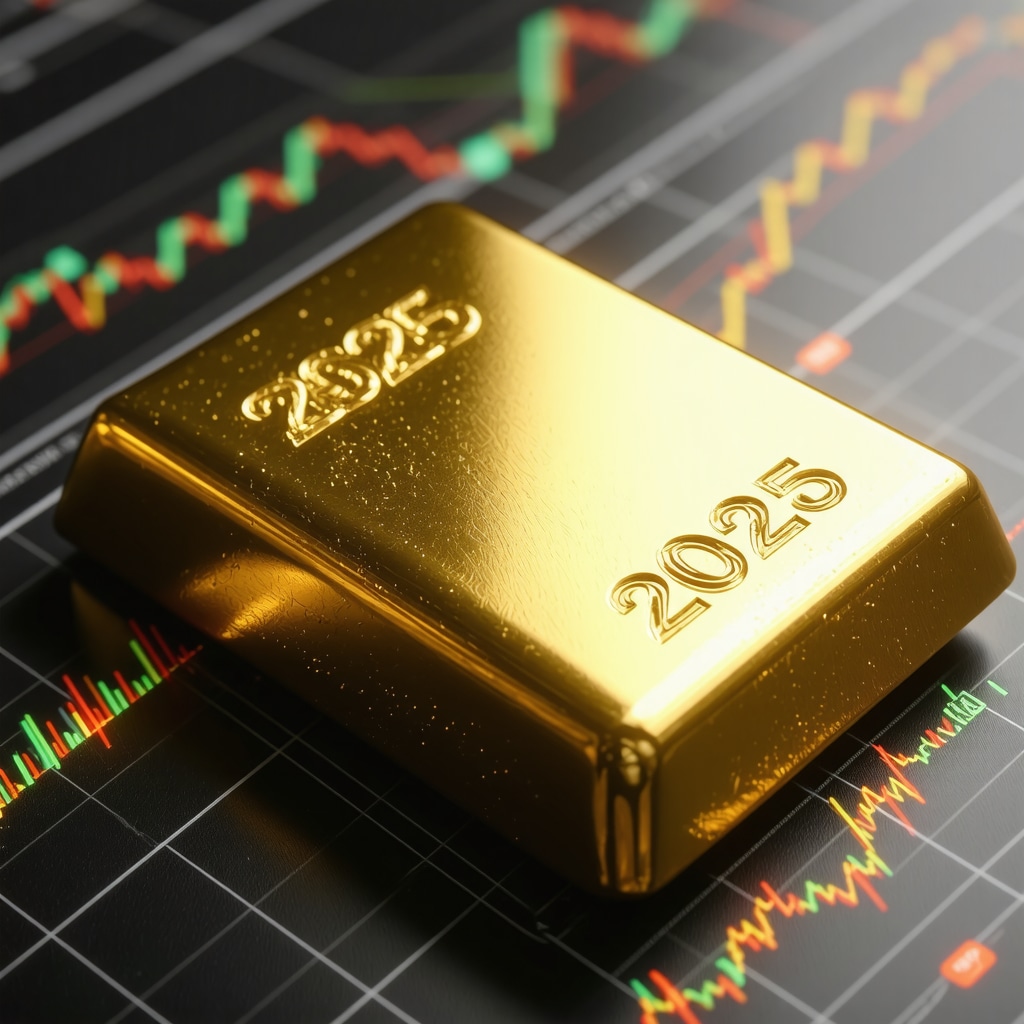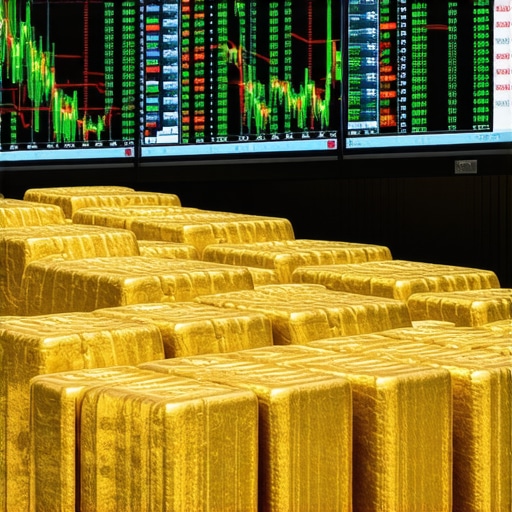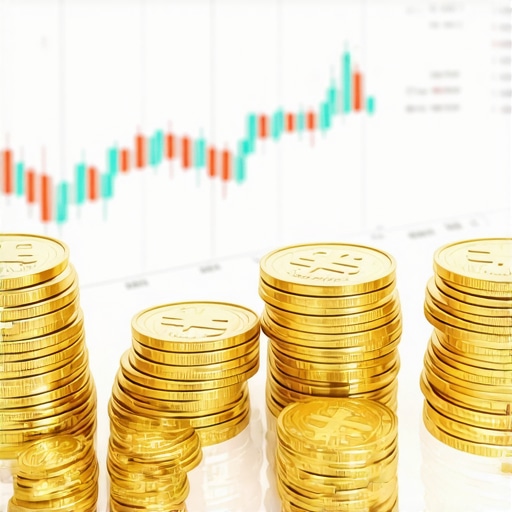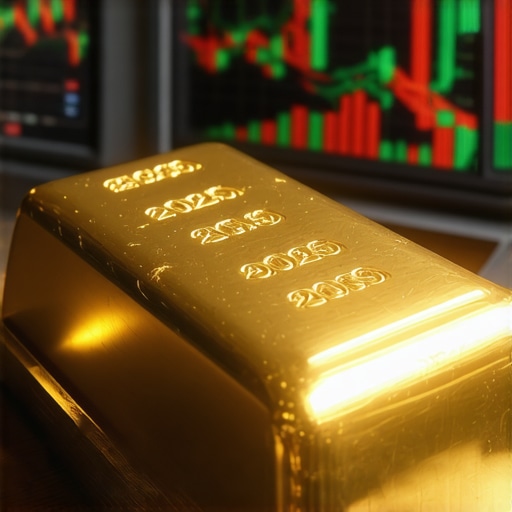Unveiling the Golden Horizon: What Awaits Investors in 2025?
As global economic dynamics shift with unprecedented speed, the gold market stands at a pivotal crossroads. In 2025, investors seeking to navigate this shimmering landscape must grasp not only price forecasts but also the underlying forces shaping demand and supply. This analysis dives deep into the trends every investor should know to make informed decisions that balance opportunity with risk.
Geopolitical Ripples and Their Spark on Gold Prices
Gold has long been a sanctuary amid geopolitical uncertainty. With escalating international tensions and policy shifts, 2025 is poised to see a renewed flight to gold as a safe haven. Investors should watch how emerging conflicts and trade negotiations influence gold’s allure as a hedge against volatility. For instance, the evolving US-China relations could significantly sway market sentiment and gold demand.
Technological Innovations Reshaping Gold Mining and Supply Chains
The gold supply chain is undergoing a quiet revolution through cutting-edge technologies like automation, AI-driven exploration, and blockchain for traceability. These advances promise increased efficiency and transparency but also affect production costs and output. Understanding these developments is crucial since supply-side changes can directly impact gold prices.
How Will Inflation and Interest Rates Influence Gold Investment Strategies in 2025?
Inflation trends and central bank policies remain among the most potent drivers of gold prices. With inflationary pressures expected to persist in various economies, gold’s role as an inflation hedge gains prominence. However, rising interest rates often exert downward pressure on gold due to opportunity costs. Savvy investors will need to balance these forces, possibly diversifying with gold ETFs or physical holdings as detailed in this comprehensive guide on gold ETFs.
Shifting Investor Preferences: From Physical Bullion to Digital Gold Assets
The 2025 investor profile is evolving, with younger demographics favoring digital gold investment instruments such as ETFs and tokenized gold. This shift impacts liquidity and market accessibility, making it essential for seasoned investors to understand the nuances between physical and digital gold investments to optimize portfolio resilience.
Environmental, Social, and Governance (ESG) Criteria in Gold Investment
Increasingly, ESG factors are influencing investor choices and mining operations. Sustainable mining practices and ethical sourcing are becoming prerequisites for attracting capital. This trend not only affects the reputation of mining companies but also the long-term stability of gold supply, warranting close attention from conscientious investors.
For those eager to deepen their understanding of gold demand dynamics and price drivers, this insightful resource offers valuable analysis.
Engage with us: How do you plan to adapt your gold investment strategy in light of these 2025 trends? Share your thoughts or questions below to foster a community of informed investors.
Source: World Gold Council – Gold Demand Trends
Personal Lessons from Gold Market Volatility
Reflecting on my own journey through gold investing, the volatility of the market has taught me invaluable lessons. Early on, I was tempted to react swiftly to price swings, but experience has shown that patience and understanding broader trends pay off more consistently. For instance, during a sudden dip influenced by rising interest rates, instead of panic-selling, I diversified my holdings into both physical gold and gold ETFs, which balanced my risk and improved long-term returns. This approach aligns with strategies outlined in smart gold investment strategies for long-term growth, reinforcing the importance of a multi-faceted portfolio.
Adapting to the Digital Gold Revolution
The rise of digital gold assets has been a fascinating development. I remember when I first explored tokenized gold investments; the ease of trading and accessibility were eye-opening. However, I quickly realized the importance of choosing reputable platforms to avoid pitfalls. It’s not just about convenience; security and transparency are key. This evolution in gold investing reminds me to stay curious and adaptive, particularly as younger investors gravitate towards these digital options.
How Can You Balance Traditional and Modern Gold Investments in Your Portfolio?
This question often crosses my mind and I believe it’s central to thriving in 2025’s market. From my experience, a blend of physical gold for tangible security and digital gold instruments for liquidity and growth potential creates a dynamic portfolio. The key is understanding your risk tolerance, investment horizon, and goals. For those interested, exploring the nuances of physical gold versus ETFs is well covered in this detailed comparison, which helped me refine my approach.
ESG and Ethical Investing: A Personal Reflection
Investing with a conscience has become increasingly important in my decision-making process. The emphasis on ESG factors in gold mining and sourcing has reshaped how I view the industry. Supporting companies that prioritize sustainability not only aligns with my values but also seems to anticipate regulatory trends that could impact profitability. According to a recent World Gold Council report, ESG-compliant gold mining is gaining momentum, making it a critical consideration for investors aiming for long-term stability.
Practical Steps to Secure Your Gold Investment in 2025
From my own practice, ensuring secure storage and trustworthy transactions is paramount. Whether you prefer physical gold or digital assets, due diligence is non-negotiable. I’ve found that thorough research into reputable dealers, such as those covered in this guide to reputable gold dealers, makes a significant difference in safeguarding investments. Additionally, considering storage solutions like insured vaults or secure digital wallets helps mitigate risks.
I’d love to hear about your experiences and strategies with gold investment in this evolving landscape. Have you embraced digital gold or stuck to physical bullion? Share your thoughts and questions below, and let’s learn together.
Integrating ESG Metrics into Gold Investment: Beyond the Surface
While Environmental, Social, and Governance (ESG) criteria have become buzzwords, integrating them meaningfully into gold investment requires a nuanced approach. Investors must delve beyond superficial claims and assess mining companies’ actual ESG performance through detailed sustainability reports, third-party audits, and certifications like the Responsible Jewellery Council (RJC) and the Initiative for Responsible Mining Assurance (IRMA). For instance, gold producers who implement innovative water recycling technologies and reduce carbon emissions not only mitigate environmental risks but often achieve cost efficiencies, enhancing long-term shareholder value.
Moreover, social factors such as community engagement and labor rights are critical in regions with artisanal mining, where ethical sourcing can significantly affect reputational risk. Governance practices, including transparent reporting and anti-corruption measures, further influence investor confidence. As highlighted in a recent World Gold Council report, ESG-compliant mining companies tend to outperform peers in both operational sustainability and market valuation, making ESG integration a strategic imperative.
The Digital Gold Paradigm: Tokenization, Blockchain Transparency, and Portfolio Diversification
The emergence of tokenized gold assets represents a radical transformation in accessibility and liquidity. Unlike traditional physical gold, tokenized gold leverages blockchain technology to offer fractional ownership, real-time trading, and enhanced provenance verification. This innovation reduces entry barriers for smaller investors and introduces programmable features such as automated dividend distribution or smart contract-based escrow services.
However, the sophistication of digital gold demands rigorous due diligence. Investors must evaluate the underlying gold backing, custody arrangements, regulatory compliance, and the security protocols of the token issuer. Platforms that employ audited custodians and independent verifications significantly reduce counterparty risks. Additionally, blending physical gold holdings with digital tokens can optimize portfolio diversification, hedging against different risk vectors while capitalizing on technological efficiencies.
What Are the Key Risk Management Techniques for Balancing Physical and Digital Gold in a Volatile Market?
Balancing physical and digital gold investments requires a layered risk management strategy. Physical gold offers tangible security but can be illiquid and costly to store, whereas digital gold enhances liquidity but introduces cybersecurity and regulatory risks. Techniques such as allocating a defined percentage of the portfolio to each asset class, employing multi-signature wallets for digital tokens, and using insured vaults for bullion storage are prudent. Additionally, continuous monitoring of geopolitical developments and macroeconomic indicators informs timely rebalancing decisions to mitigate volatility impact. Incorporating derivative instruments like gold futures or options can further hedge downside risks, although these require advanced expertise.
To master these strategies, investors may refer to specialized resources like the Investopedia guide on Gold ETFs and risk management, which offers in-depth insights into blending traditional and modern gold investment vehicles.
Leveraging Advanced Analytics and AI for Predictive Gold Market Insights
As we progress deeper into 2025, artificial intelligence and big data analytics are revolutionizing how investors forecast gold price movements. Machine learning models that analyze vast datasets—ranging from macroeconomic indicators, central bank policies, to social media sentiment—offer predictive insights with unprecedented granularity. These tools can identify subtle correlations and early signals of market shifts that traditional analysis might overlook.
For example, natural language processing algorithms can gauge geopolitical risk sentiment from news feeds and adjust investment models accordingly. Meanwhile, predictive analytics can optimize timing strategies for gold purchases or sales, enhancing return potential while controlling risk. Incorporating these technologies into investment frameworks demands not only technical acumen but also critical evaluation to avoid overreliance on algorithmic outputs.
Investors interested in integrating AI-driven analytics should explore platforms like World Gold Council’s Market Insights, which provide data-rich resources and analytical tools tailored for sophisticated gold market participants.
By embracing these multidimensional strategies—ESG integration, digital innovation, risk management, and AI analytics—investors can position themselves at the vanguard of the 2025 gold market evolution. Ready to deepen your expertise? Dive into our advanced guides and join our expert community to refine your gold investment approach for the challenges ahead.
Harnessing Predictive Analytics: The Frontier of Gold Market Forecasting
In the rapidly evolving gold market landscape of 2025, predictive analytics powered by artificial intelligence (AI) and machine learning have transcended traditional forecasting methods. These sophisticated tools synthesize complex data streams—from global macroeconomic indicators to sentiment analysis derived from social media and geopolitical news—enabling investors to anticipate market fluctuations with remarkable precision. Integrating such advanced analytics into your investment strategy can unearth hidden correlations and early warning signs that conventional analysis might overlook, thus enhancing decision-making agility in volatile environments.
What Are the Best Practices for Incorporating AI into Gold Investment Models?
Implementing AI-driven models requires a judicious balance between technological capabilities and human expertise. Best practices emphasize rigorous validation of algorithmic outputs against historical data, continuous recalibration to adapt to evolving market conditions, and a multidisciplinary approach combining quantitative analysis with qualitative insights. Additionally, investors should be wary of overfitting and algorithmic bias, ensuring transparency and interpretability in model design. Platforms such as the World Gold Council’s Market Insights offer invaluable resources to deepen understanding of these methodologies.
Decoding ESG Integration: Strategic Imperatives Beyond Compliance
Advanced investors recognize that robust ESG integration in gold investment transcends mere regulatory adherence or marketing optics. It involves a granular evaluation of environmental footprints, social impact metrics, and governance frameworks within mining operations. Cutting-edge techniques include leveraging satellite data and remote sensing to monitor environmental compliance, utilizing blockchain to verify ethical sourcing, and engaging in active shareholder advocacy to influence corporate governance. Such comprehensive scrutiny not only mitigates reputational and operational risks but also aligns portfolios with the accelerating shift toward sustainable finance paradigms.
Innovative Risk Mitigation: Synergizing Physical and Digital Gold Holdings
In an era marked by rapid digitization, blending physical bullion with tokenized gold assets necessitates sophisticated risk frameworks. Investors should employ multi-layered strategies such as utilizing insured vault storage for tangible assets, implementing multi-signature and cold wallet solutions for digital tokens, and dynamically rebalancing portfolios in response to macroeconomic signals. Furthermore, hedging instruments like gold options and futures can serve as effective buffers against market volatility when applied with expert precision. Mastery of these techniques demands continuous education and engagement with cutting-edge financial instruments.
Advanced Market Access: The Role of Tokenization and Blockchain Transparency
Tokenization of gold, underpinned by blockchain’s immutable ledger, revolutionizes market access by enabling fractional ownership and enhancing provenance verification. This democratization facilitates liquidity and portfolio diversification previously unattainable for many investors. However, it also introduces complexities related to regulatory oversight, custody risks, and smart contract vulnerabilities. Navigating this terrain requires discerning selection of platforms with audited custodianship, compliance certifications, and robust cybersecurity protocols to safeguard investments effectively.

How Can Institutional Investors Leverage Blockchain to Enhance Gold Asset Security and Traceability?
Institutional players increasingly utilize blockchain technology to reinforce gold asset security and traceability by establishing transparent audit trails and immutable ownership records. Deploying permissioned blockchain networks allows for controlled access while maintaining end-to-end visibility of transactions and provenance. Smart contracts automate compliance checks and settlement processes, reducing operational friction and counterparty risk. Collaborations with specialized technology providers and adherence to frameworks such as the Responsible Jewellery Council’s standards further strengthen governance. This paradigm shift fosters trust and operational efficiency, critical for scaling gold investments in an increasingly digitized global market.
For an in-depth exploration of these cutting-edge topics, the World Gold Council remains an authoritative source, providing data-driven insights and strategic guidance tailored for sophisticated investors.
Unlock the potential of your gold portfolio by engaging with these advanced strategies and technological innovations. Connect with our expert community to exchange insights and elevate your investment acumen in 2025 and beyond.
Frequently Asked Questions (FAQ)
What factors primarily drive gold prices in 2025?
Gold prices in 2025 are influenced by a multifaceted set of factors including geopolitical tensions, inflation rates, central bank policies, technological advances in mining, and investor sentiment shifts toward digital assets. Inflation often boosts gold as an inflation hedge, whereas rising interest rates can dampen demand due to opportunity costs. Additionally, ESG considerations and supply chain innovations increasingly impact pricing and investor preferences.
How does tokenized gold differ from physical gold investments?
Tokenized gold represents fractional ownership of gold assets recorded on a blockchain, enabling liquidity, real-time trading, and enhanced provenance verification. Physical gold involves tangible bullion or coins, offering direct possession and security but with higher storage and liquidity constraints. Tokenized gold offers accessibility to smaller investors and programmable features but requires due diligence on platform security and regulatory compliance.
What role does ESG integration play in gold investing?
ESG integration goes beyond compliance to encompass thorough evaluation of environmental footprints, social impacts, and governance practices in gold mining. Sustainable mining reduces operational risks and aligns investments with evolving regulatory and ethical standards. Investors who prioritize ESG criteria tend to support companies with better long-term performance and reputational stability, making ESG a strategic imperative in 2025’s gold market.
How can investors balance risks between physical and digital gold holdings?
Balancing risk requires a diversified approach that leverages the tangible security of physical gold with the liquidity and innovation of digital assets. Risk management strategies include allocating portfolio weights thoughtfully, utilizing insured vault storage and multi-signature wallets, monitoring macroeconomic indicators for timely rebalancing, and employing hedging instruments like options or futures. Continuous education and platform vetting are essential to mitigate cybersecurity and regulatory risks.
What technological innovations are shaping gold mining and supply chains?
Technologies such as AI-driven exploration, automation, blockchain for traceability, and remote sensing are revolutionizing gold mining. These innovations improve efficiency, reduce costs, enhance transparency, and promote sustainable practices. They also influence supply dynamics by potentially increasing production and ensuring ethical sourcing, which impacts investor confidence and market valuation.
How can AI and predictive analytics enhance gold market forecasting?
AI and predictive analytics synthesize vast data streams—including macroeconomic indicators, geopolitical sentiment, and market trends—to identify patterns and early warning signals beyond traditional analysis. This enables more agile and informed decision-making, optimizing timing for purchases or sales. However, integrating AI requires validation, ongoing recalibration, and blending with human judgment to avoid overreliance on algorithms.
Are gold ETFs a suitable alternative to physical gold?
Gold ETFs offer portfolio liquidity, ease of trading, and cost efficiency compared to physical bullion. They allow exposure to gold price movements without the complexities of storage and security. However, ETFs carry issuer counterparty risks and lack direct physical ownership, so investors should assess their goals, risk tolerance, and the trade-offs between convenience and tangibility.
How do geopolitical developments influence gold investment strategies?
Geopolitical instability often drives investors to gold as a safe haven, increasing demand and prices. Trade tensions, conflicts, and policy shifts can heighten market volatility, prompting portfolio rebalancing toward gold. Monitoring geopolitical indicators is crucial for timing investments and hedging risks effectively.
What are best practices for securing physical gold investments?
Secure storage solutions include insured vaults, bank safety deposit boxes, or professional custodians. Due diligence when purchasing from reputable dealers is vital to avoid fraud. Additionally, maintaining documentation and considering insurance coverage further protect physical holdings from theft, loss, or damage.
How do younger investors influence the gold market in 2025?
Younger investors tend to favor digital gold assets like tokenized gold and ETFs due to accessibility and ease of trading. This demographic shift enhances market liquidity and fosters innovation but also necessitates investor education on digital asset risks and platform credibility. Their preferences are reshaping the gold investment landscape.
Trusted External Sources
- World Gold Council (WGC): The WGC provides comprehensive data and insights on gold demand trends, ESG standards, and market analysis. Their research underpins informed decision-making with authoritative statistics and strategic guidance.
- Responsible Jewellery Council (RJC): This organization offers rigorous certification frameworks for ethical sourcing and sustainability in the gold supply chain, vital for ESG-conscious investors.
- Initiative for Responsible Mining Assurance (IRMA): IRMA delivers standards and independent audits for responsible mining practices, enabling investors to assess environmental and social impacts effectively.
- Investopedia – Gold ETFs and Risk Management: A trusted resource explaining gold investment vehicles, risk mitigation techniques, and portfolio strategies, helping both novices and experts.
- Academic Journals on AI in Finance: Peer-reviewed publications exploring machine learning applications in commodity forecasting provide advanced methodologies for integrating AI analytics into gold investment models.
Conclusion
As the gold market advances into 2025, investors face a complex yet opportunity-rich environment shaped by geopolitical volatility, technological breakthroughs, and evolving investor values emphasizing ESG and digital innovation. Mastery of this landscape demands a multi-dimensional approach—balancing physical and digital assets, integrating predictive analytics, and scrutinizing ethical sourcing to mitigate risk and optimize returns. The fusion of traditional wisdom with cutting-edge tools empowers investors to navigate uncertainty confidently, unlocking gold’s enduring potential as a strategic portfolio cornerstone. To deepen your expertise and refine your strategy, engage with our expert community, explore advanced resources, and share your insights—together, we can illuminate the path to sustainable gold investment success in the years ahead.










